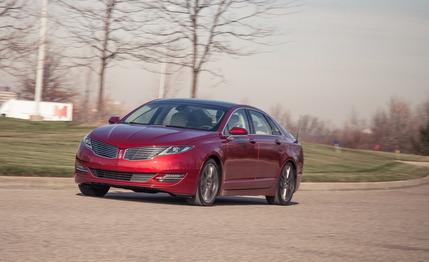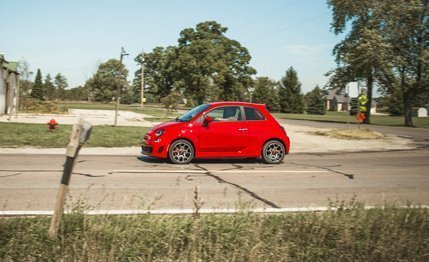
 Instrumented Test
Instrumented Test


Among the many sayings attributed to Abraham Lincoln is this one: “If I should call a pig’s tail a leg, how many legs would it have? Only four, because my calling the tail a leg would not make it so.” Although in truth Honest Abe merely appropriated this bit of folk wisdom for his own speechifying purposes, it’s still relevant in considering this newest sedan from his eponymous brand.
The 2013 Lincoln MKZ is ostensibly a luxury car, but one built by Ford, whose nearly complete lack of understanding of the genre has been on wide display for at least a decade. (See: Jaguar, et al.) Which is not to damn the MKZ for its lineage, but rather to suggest that Russian director Timur Bekmambetov’s recent depiction of the 16th president fighting the undead in Abraham Lincoln: Vampire Hunter is only marginally less fanciful than the thinking vis-à-vis Lincoln that’s been going on lately in Dearborn.


Indeed, Ford is battling its own demons with the MKZ, principally in the form of the 2013 Fusion, a nameplate with which the new Lincoln model again shares its roots. In base front-wheel-drive trim, the Fusion plays in an altogether different class, but that same car can be easily optioned up to and beyond the $36,800 starting price of the MKZ. Whereupon that spendthrift Ford customer will actually be acquiring most of the Lincoln’s optional features at a considerable saving, from all-wheel drive to nav to driver-assist features like automatic parallel parking, lane-departure intervention, and adaptive cruise control. An MKZ equipped similarly to a loaded Fusion costs some $9000 extra, and by the time the Lincoln customer ticks the boxes for the MKZ’s two signature options, a 3.7-liter V-6 ($1230) and a retractable glass roof that obstructs rear visibility when opened ($2995), he will be looking at a price tag much like the one of our $51,185 test vehicle. Speaking of dead presidents…
Although the 2013 MKZ is a much more thorough reimagining of the underlying Fusion than was the previous generation, bearing less resemblance inside and out, it still carries telltale signs of what lurks beneath, like its flimsy turn-signal stalk and other such switchgear. The high beltline and the sleek roof are also shared with the Fusion, although amplified by the MKZ’s styling, which makes its cockpit more of a cocoon and the back seat less spacious than it might otherwise be. The trade-off for less headroom (and a smaller trunk) is the styling, of course, a crowning achievement for stodgy Lincoln, even if it is seemingly pieced together from other influences.
Up front we have the new face of the brand, with a split-wing grille adorning a nose more bulbous than the concept’s. The sides of the car seem Volvo-esque, with a single character line running from stem to stern just below the beltline, and the MKZ’s rear end wouldn’t be out of place on a Mustang if you fitted different taillights. However disjointed, the look does somehow work, although perhaps not as well as that of the Fusion. This is the biggest problem with the MKZ: The lesser Ford is already a superlative car, and the ways in which the Lincoln presents itself as a premium product are only partly successful.